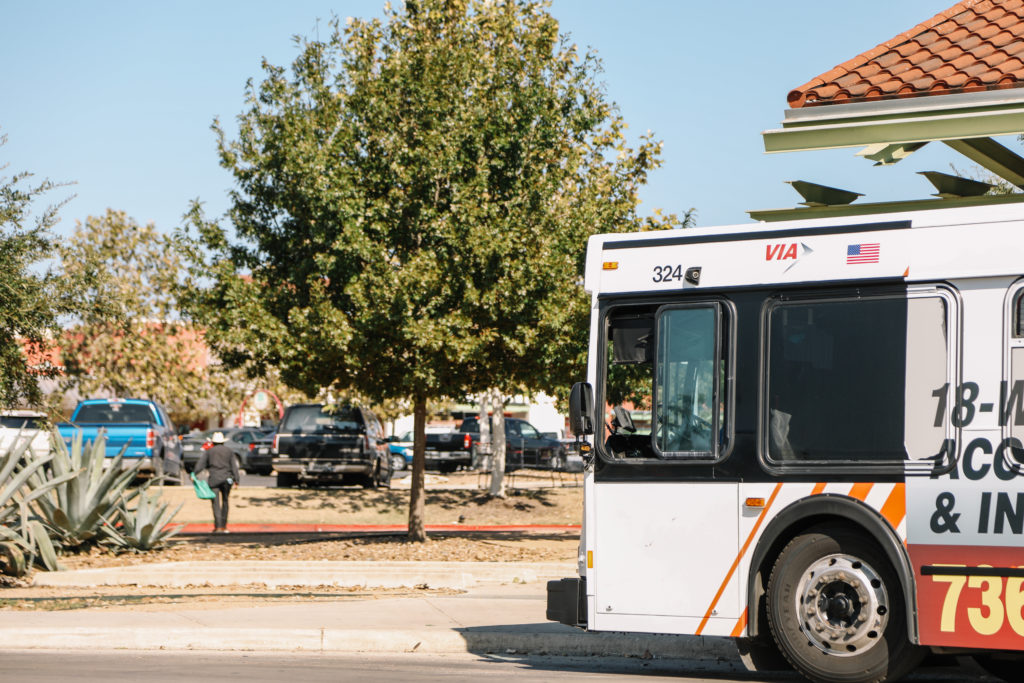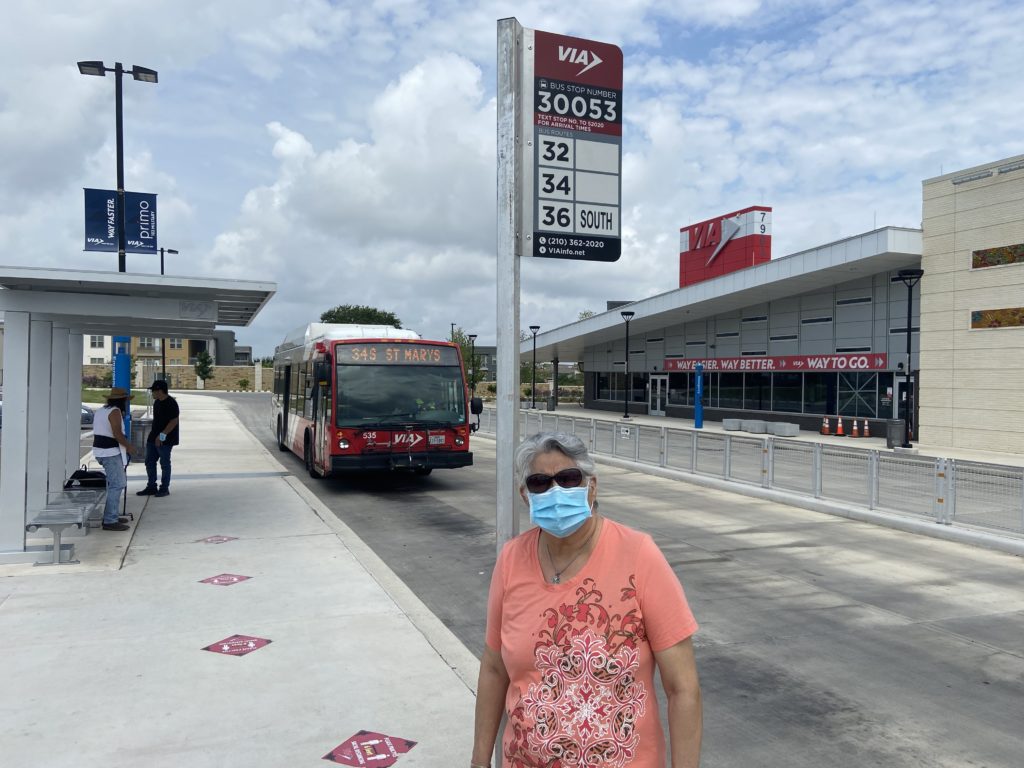Editor’s Note: Dolores Vara told this narrative to her son, Francisco Vara-Orta, who captured it in writing. It has been edited for brevity and clarity.
I’ve depended on the city bus in San Antonio off and on for 65 years. Now almost 75, I still hope for better days regarding the bus system, which has come a long way in our city.
My first memories of riding the bus start with the four blocks my mom and I walked to get to the bus stop on South Flores and Lubbock in the South Side where I grew up. This was in the 1950s, nearly twenty years before VIA was formed. In the 1960s, I rode the bus full-time daily to get to Brackenridge High School. I took two buses, transferring downtown to get to and from home and school — usually a 90-minute commute. I wasn’t even going crosstown.
I never learned how to drive, in part because most people I went to high school with couldn’t afford cars. And those who did were usually male.
After high school graduation — at that time Latinas were not supported or empowered to earn a college degree or plan a career — I attended what was called a “flight hostess school” to become a flight attendant. That exposed me at age 19 to other types of transit as I studied in New York City and rode the subway and trains for the first time. To get from one borough to another was so convenient for those working to have access to a better job and, in turn, a better quality of life. It showed me what life could be like without depending on a car — which is healthy for the environment.
As a third-generation American, I spent a few years as a stewardess for Trans Texas Airways, based in Dallas, before settling back in San Antonio. Those days, though, airways mostly served the elite. Stewardesses were not encouraged or allowed to marry or be pregnant, so I resigned to become a full-time stay-at-home-mom where I depended on my husband — who I met in high school — to help drive our family around as he (you guessed it) owned a car.
Transit gave me a conduit to a better life. I became a single mother around age 40 and had two kids and an elderly mother to support — and no ride. Money at first was tough to come by and we still couldn’t afford a car. For 20 years, I primarily depended on the bus to get from my home on the South Side to my job in the gift shop inside the Alamo.
People often don’t choose to ride the bus; it’s a matter of survivalism, which I believe is not understood well when I see policy discussions. How many of our decision-makers in the city have lived or live like the rest of us? That’s the disconnect until one is forced into such a position. Spend time driving around the city on a hot, cold or rainy day and you will see some of our forgotten or marginalized citizens. We have agency too; we speak up but that doesn’t mean we’re often heard.

It’s important to note that by the late 1980s, there were major changes to San Antonio’s transit system. All buses were now air conditioned, the system had grown with the city, and bus passes were made available so passengers didn’t need cash and could save money on rates. Senior and student discounts also helped.
It still took a while for people with wheelchairs to easily enter buses, if at all, until more recent models were available. I experienced this problem with my elderly mom who frequently had medical appointments.
I still ride the bus when the weather permits, but it’s still rough going, and many stops don’t have much cover from the elements. We are more than just needing the bus to survive; we still want to make it to fun events on our time off and on the weekends, but that’s when service is the slowest. If you want people to ride the bus, increase the frequency that buses run. Whether to travel to work or somewhere fun, who wants to stand outside for a whole hour? (One of the best improvements of late: the text messaging system so passengers know when their bus will arrive.)
San Antonio is not alone in our troubled history of implementing a better public transit system, and VIA has had its hands tied as no one seemingly wants to foot the bill. Our transit system is underfunded nationwide, worsened by the pandemic. Many of us paying attention were encouraged that voters last year passed an initiative to add funding to VIA, but that won’t roll in for another five years.
It’s key to have people in power who understand the bus-riding experience. To better understand what I mean, try ditching your car for a week and riding the bus. I imagine you’ll quickly discover what needs improving.

